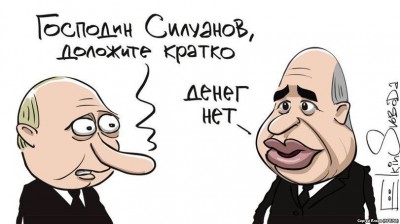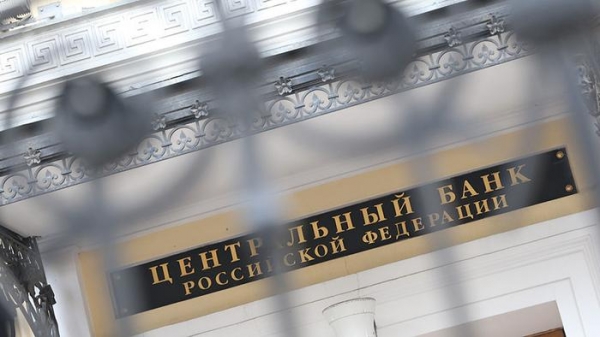In August, the Central Bank revoked the licenses of seven banks
Semyon Mikhailov
 Artyom Sizov/”Газета.Ru”
Artyom Sizov/”Газета.Ru”
The Central Bank continues “cleansing” of the domestic banking sector. In August licenses have lost seven credit institutions. According to Agency on insurance of contributions (ASV), the Deposit insurance system on August 26, left 545 operating banks licensed to work with individuals. Tough policy, the Central Bank has reduced the availability of banking services in the regions and the concentration of business in the largest, mostly public, banks.
According to the DIA, currently the number of participants of system of insurance of contributions is 819 credit institutions. But of these, of existing banks licensed to work with individuals, there were only 545. Five operating credit institutions lost the right to attract monetary funds of physical persons, and 269 — are in the process of liquidation.
On August 1, 2016 (since the beginning of functioning of system of insurance of contributions) number of insurance claims have already reached 345. The amount of the insurance liability insurance Agency banks in respect of which the insured event had occurred amounted to 1.08 trillion RUB.
The number of depositors entitled to insurance compensation in banks in which the insured event had occurred on August 1 of this year exceeded 4% of the total population of the country and 6.03 million people received insurance indemnity only 2.55 million people.
According to official reports on the website of the Bank of Russia, in August, the regulator has revoked the licenses of seven credit institutions. Formally the largest number of revoked licenses during the “Stripping” is necessary to Moscow and Moscow oblast. So, at present, the ASV performs the functions of a bankruptcy Trustee (liquidator) in 281 credit institutions, of which the Metropolitan area was 172 the Bank, in other regions — 109.
But here’s the problem: in many regions of the country except for one local and a couple of state-owned banks more and there is none. For example, BaikalBank, whose Central Bank recently revoked the license, was the only regional Bank in Buryatia, informs RIA “news”. Eliminating regional Bank, the Central Bank de facto reduces the availability of banking services for business and population.
If to analyze the statistics of the Central Bank, it turns out that this process goes on continuously for several years. Despite the fact that the total number of banks fell by almost half, from 1 January 2010 to 1 July 2016 the number of branches of credit institutions in their regions declined much more, from 601 to 154. Most banks there are no branches, some of them four to seven, and only banks of Moscow, Tatarstan and Chelyabinsk region affiliates in their regions for more than ten.
The number of internal structural divisions (additional offices, credit-cash offices, operational cash desks out of cash knot, operational offices) for the same period also decreased. If on 1 January 2010 there were 37 894 1 July 2016 they left 35 616. Thus 37,5% of all offices had a total of nine regions (Moscow and Moscow region, there were 5058).
Such compression of the banking infrastructure leads to a completely predictable result, namely a concentration of financial resources in the most important credit institutions, including those whose controlling stakes in state-owned Sberbank, VTB, Rosselkhozbank, etc.
For five years (from 1 July 2011 to 1 July 2016), according to the Bank, the share of 30 largest banks in the country grew in total volume and placed and borrowed funds.
Thus, the volume of loans granted to legal entities-residents and individual entrepreneurs in rubles on July 1, 2016, $ 14,303 trillion rubles., of which “thirty” had 11,118 trillion rubles, or 77.7% of the. Meanwhile, on 1 July 2011, they accounted for 71.1% of the (7,746 trillion rubles from 10,893 trillion).
The total volume of raised funds (legal entities and individuals in rubles, foreign currency and precious metals) on 1 July 2016 were estimated at 50,714 trillion rubles., of which the largest 30 banks accounted for 81.5% of the (41,351 trillion). Five years ago, “thirty” had only 73,1% (16,540 trillion from RUB 22,636 trillion).
In addition to the concentration and increase the role of the largest credit organizations of the Bank “sweep” leads to other problems. So, in the financial review, the Central Bank for the second quarter, it indicates that the liquidity cannot flow between different credit institutions, in the end, one Bank formed its surplus, others a deficit.
“The current market segmentation and its concentration mainly in the Moscow region limit the redistribution of liquidity among small regional banks. This is due to infrastructure and geographical features of the country. A large number of time zones in Russia, the high costs of terminal services to access exchange transactions hinder the development of the money market in the regions. As a result, the excess liquidity from the accounts of regional banks may not get to Bank accounts, those that need to raise funds”, — stated in the materials of Bank of Russia.
It is obvious that these problems are largely to blame the regulator, which not only fights against various illegal operations, but simply increases the demands on banks. Can’t execute them good — bye, tell clients the state-owned banks.
The Central Bank, apparently in an effort to correct their own mistakes, proposed legislation to consolidate the status of a “regional Bank”. It needs to give regulatory relief for small credit institutions in the regions. But the banking community has welcomed this initiative is ambiguous, as with the easing of the Central Bank wants to impose the constraints. For example, to prohibit cross-border operations and foreign exchange operations.
This bill will be discussed at the next banking forum in Sochi, which will take place at the end of the first decade of September. How constructive the conversation will turn is anyone’s guess.








